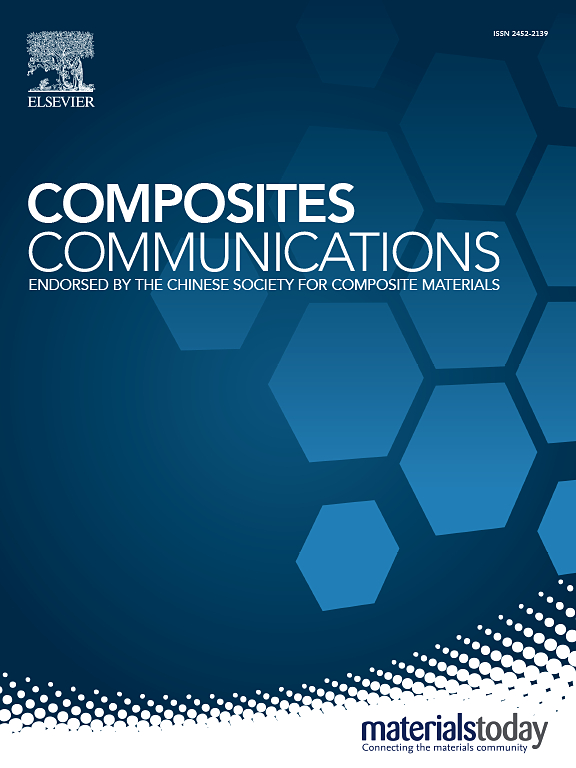Synergistic toughening of CFRP laminates using melt-infused thermoplastic interleaves and toughened epoxy
IF 6.5
2区 材料科学
Q1 MATERIALS SCIENCE, COMPOSITES
引用次数: 0
Abstract
The delamination behavior of carbon fiber-reinforced polymers (CFRP) under out-of-plane loading significantly limits their use in demanding applications. Thus, this study explores the interlaminar fracture toughness (ILFT) of CFRP laminates reinforced with three toughening methods: Carbon fiber (CF) infused with toughened epoxy matrix (TE), CF infused with HNT-modified epoxy (N), and CF/epoxy laminates interleaved with melt-infused thermoplastic (PA6) interleaves (I). Mode-I and Mode-II tests were conducted to assess these toughening mechanisms' individual and combined effects. The TEI hybrid configuration exhibited the highest performance, with a 629 % increase in Mode-I ( = 3368 J/m2) and a 946 % improvement in Mode-II ( = 3193 J/m2) compared to the reference laminate. Key toughening mechanisms in TEI included cavitation, shear yielding, plastic deformation, and fiber-related mechanisms (fiber bridging, debonding, pull-out, and breakage). Mode-II had a significant percentage synergy range of 50 %–150 %, mostly attributed to intrinsic toughening. The synergy was due to the potential interactions of mutual promotion and restraint between the toughening mechanisms of TE and I. TE contributed to increased plastic yield zone, cavitation, and shear yielding, while the interleaves contributed to fiber-related toughening mechanisms alongside extensive plastic deformation of PA6 interleaves. Overall, the synergistic toughening achieved in this study provides valuable insights useful in optimizing damage-tolerant composites for high-performance applications such as aerospace and automotive structures.

求助全文
约1分钟内获得全文
求助全文
来源期刊

Composites Communications
Materials Science-Ceramics and Composites
CiteScore
12.10
自引率
10.00%
发文量
340
审稿时长
36 days
期刊介绍:
Composites Communications (Compos. Commun.) is a peer-reviewed journal publishing short communications and letters on the latest advances in composites science and technology. With a rapid review and publication process, its goal is to disseminate new knowledge promptly within the composites community. The journal welcomes manuscripts presenting creative concepts and new findings in design, state-of-the-art approaches in processing, synthesis, characterization, and mechanics modeling. In addition to traditional fiber-/particulate-reinforced engineering composites, it encourages submissions on composites with exceptional physical, mechanical, and fracture properties, as well as those with unique functions and significant application potential. This includes biomimetic and bio-inspired composites for biomedical applications, functional nano-composites for thermal management and energy applications, and composites designed for extreme service environments.
 求助内容:
求助内容: 应助结果提醒方式:
应助结果提醒方式:


